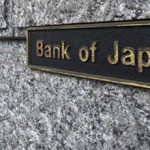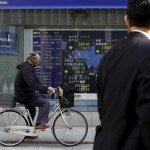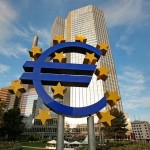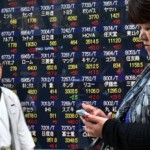Bank of Japan launches negative rates, already dubbed a failure by markets
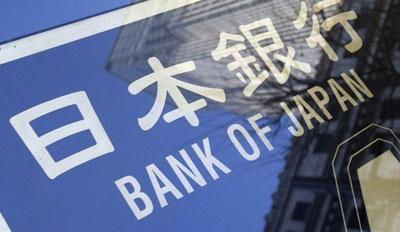
The Bank of Japan‘s negative interest rates came into effect on Tuesday in a radical plan already deemed a failure by financial markets, highlighting Tokyo’s lack of options to spur growth as global markets sputter.
The central bank, which announced the shock decision on Jan. 29, will charge banks 0.1 percent for parking additional reserves with the BOJ to encourage banks to lend and prompt businesses and savers to spend and invest.
While the announcement briefly drove down the yen and buoyed Japanese share prices, markets quickly went into reverse.
“It’s getting clearer that Abenomics is a paper tiger,” said Seiya Nakajima, chief economist at Office Niwa, a consultancy, referring to Prime Minister Shinzo Abe’s policy mix of monetary easing, spending and reform.
“The impact of monetary easing is similar to currency intervention. The first time they do it, there’s a huge impact. But as they repeat it, the impact will wane,” said Nakajima.
Though senior BOJ officials were at pains to say they had calibrated only a minor impact on Japanese banks, their stock prices plunged, contributing to a global market sell-off, particularly in financial shares.
BAD TIMING
The problem was partly bad timing, as global markets were already in a tailspin over concerns about China’s slowdown, U.S. rate hikes and tumbling oil prices. But the reaction leaves BOJ Governor Haruhiko Kuroda’s assertion that his policy is having its intended effects looking increasingly threadbare.
“It seems as though the BOJ’s action triggered the market moves,” said Yoshinori Shigemi, global market strategist at JPMorgan Asset Management. “But a better explanation would be that concerns elsewhere overwhelmed the BOJ action.”
In the 11 days since the BOJ board’s announcement, the benchmark Nikkei index has fallen 8.5 percent, despite a sharp rebound on Monday, while the yen has climbed 6.5 percent against the dollar.
Japanese bank shares have slumped by as much as 30 percent as they are unlikely to pass on negative rates to savers, who already get negligible interest on their deposits but would baulk at paying to save. Negative rates could push down bank operating profits by 8-15 percent, Standard and Poor’s said.
The 10-year Japanese government bond yield initially fell below zero on the easing – a first among Group of Seven economies. But it has recovered from minus 0.035 percent last week to 0.090 percent above zero, with Japanese markets becoming more unstable as investors are at a loss on how to reckon fair value.
Prices on 10-year JGB futures imply volatility above 5 percent, a 2.5-year high and more than triple the level at the start of the year. This high volatility could persist, and the BOJ has only itself to blame, some market players say.
The overnight call rate, the benchmark for interbank lending, fell to 0 to 0.001 percent on Tuesday, traders said, down from its weighted average of 0.074 percent on Monday.
Although the rate is likely to fall to negative levels eventually, it is unlikely to fall below zero for now, partly because many banks have not yet fixed their trading system to cope with negative interest rates.
“At the moment, no one seems willing to lend at negative rates… The BOJ decided to introduce negative rates so suddenly without giving banks time to prepare for them,” said Keita Higano, market economist at Totan Research.
IN DEFENSE
Economy Minister Nobuteru Ishihara said it will take more time to analyze the impact of negative rates but it is already starting to affect mortgages and auto loans.
BOJ Governor Kuroda told parliament it wasn’t the BOJ’s policy but “excessive risk aversion” that was behind the global market turbulence.
And BOJ Deputy Governor Hiroshi Nakaso told a New York audience on Friday that the new, three-tiered rate scheme “is carefully designed to mitigate aggressive impact on banks’ profitability while ensuring the effect of negative rates on prices in financial markets”.
But a former BOJ official who retains close contact with central bankers said this “is essentially saying that the effect of its policy itself is limited”, adding: “If the move was aimed at weakening the yen, it failed completely.”
Some BOJ officials privately worry whether the central bank can keep gobbling up JGBs at the current pace of $700 billion a year, as negative rates would discourage financial institutions from piling up the cash they would earn by selling JGBs to the BOJ. Japan’s three ‘megabanks’ have scrambled to buy JGBs and corporate bonds, seeking whatever meagre interest they can earn without taking on much risk.
While Kuroda notes the BOJ can cut rates deeper below zero, market participants say there’s little hope that more of the same would have a beneficial effect.
Source: REUTERS









